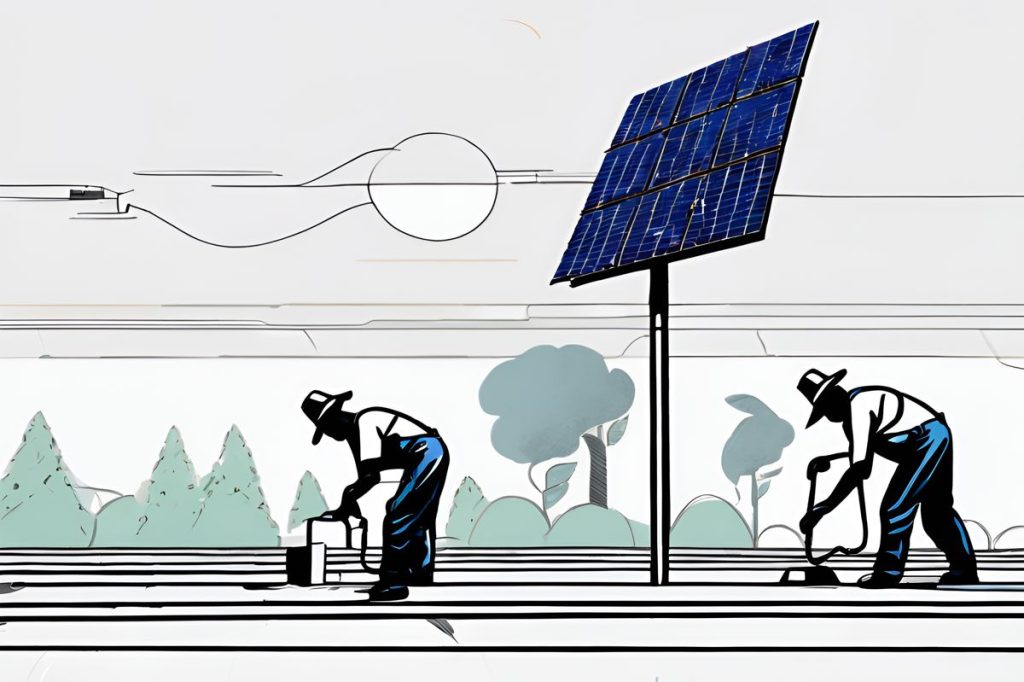The Electricity Authority of Cyprus (EAC) is investing €45 million to upgrade its power grid, including new substations and advanced transformers, to ensure a stable power supply and support renewable energy integration. This move aims to balance costs and enhance sustainability without burdening consumers.
What is the Electricity Authority of Cyprus (EAC) doing to enhance its power grid?
The Electricity Authority of Cyprus (EAC) is investing €45 million to improve its power grid. This includes establishing new substations, upgrading existing ones with advanced transformers, and integrating renewable energy sources. Their aim is to ensure a stable, uninterrupted power supply and support sustainable energy solutions, balancing costs and avoiding undue financial strain on consumers.
Bolstering the Power Grid
The Electricity Authority of Cyprus (EAC) is taking significant strides to enhance the robustness and reliability of the island’s electrical infrastructure. With an earmarked budget of €45 million, the board is set to endorse contracts for two pivotal projects aimed at reinforcing the electricity transmission system. This substantial investment will see the establishment of new substations and the modernization of existing ones, including the installation of cutting-edge transformers. These upgrades are not mere enhancements; they are a testament to EAC’s dedication to ensuring that the power supply remains steadfast and uninterrupted to its consumers, as emphasized by EAC acting Transmission Manager, Costas Stasopoulos.
The commitment to a stable power supply does not overshadow the EAC’s environmental ambitions. A core objective remains the integration of renewable energy sources into the national grid. The pursuit of this goal necessitates the development of new transmission lines, both overhead and subterranean, as well as additional substations. This approach is critical as the region turns its gaze towards sustainable energy solutions, and Cyprus is poised to make substantial progress in this endeavor.
Renewable Energy and Infrastructure Challenges
Stasopoulos highlighted the monumental efforts underway to escalate infrastructure projects crucial for this green transition. Addressing the economic aspects, he revealed that proposals have been tabled to the finance ministry to alleviate electricity costs, backed by the financial support of the EU’s Just Transition Fund. Emphasizing consumer welfare, Stasopoulos assured that the burden of these projects’ costs would not fall upon the public.
Dispelling misconceptions, Stasopoulos clarified that issues concerning the curtailment of energy from large solar parks are not related to the transmission network’s capacity. The cutbacks stem from a surplus of renewable energy generation compared to the demand, leading to the unfortunate wastage of excess power. The EAC is evidently navigating complexities as it seeks to harmonize the power generation with consumer needs.
Future-Proofing the Grid
Looking towards the future, Stasopoulos acknowledged the limitations in achieving a grid that permits unrestricted renewable connectivity across Cyprus. Such an expansive network would incur significant costs, projected to be in the hundreds of millions, which could potentially impact consumer pricing. The current grid design is optimized for power to flow from major stations at Vasilikos and Dhekelia towards urban centers and then on to rural areas. However, as renewable energy sites often situate in more remote, cost-effective zones, the challenge is to reverse this flow without imposing undue financial strain on the population.
Moreover, the bureaucratic pace poses its own set of challenges; acquiring permits for new transmission lines is a prolonged process. Stasopoulos pointed to a recent case where a permit took six years to secure, indicating a need for more efficient administrative processes to keep pace with the rapidly evolving energy sector.
A Veteran Reporter’s Insight
In the domain of Cyprus’ energy landscape, seasoned journalist Elias Hazou offers a wealth of knowledge. With a background rich in covering energy, political dynamics, and legislative intricacies, Hazou’s reporting provides context and depth to the ongoing developments within the EAC and the broader energy sphere in Cyprus. His contributions are instrumental in keeping the public informed on key decisions that shape the present and future of the island’s electricity system.
What is the Electricity Authority of Cyprus (EAC) doing to enhance its power grid?
The Electricity Authority of Cyprus (EAC) is investing €45 million to improve its power grid. This includes establishing new substations, upgrading existing ones with advanced transformers, and integrating renewable energy sources. Their aim is to ensure a stable, uninterrupted power supply and support sustainable energy solutions, balancing costs and avoiding undue financial strain on consumers.
How is the EAC bolstering the power grid?
The EAC is investing €45 million in establishing new substations and modernizing existing ones with advanced transformers to reinforce the electricity transmission system. This investment aims to enhance the reliability and robustness of the power grid to provide a steadfast and uninterrupted power supply to consumers. Additionally, the EAC is integrating renewable energy sources into the grid to support sustainable energy solutions.
What challenges and initiatives are associated with renewable energy integration and infrastructure development?
Efforts are underway to escalate infrastructure projects crucial for transitioning to green energy sources. Proposals have been made to the finance ministry to mitigate electricity costs, with support from the EU’s Just Transition Fund. The EAC is working towards integrating renewable energy sources into the grid, but challenges such as curtailment of energy from large solar parks due to surplus generation compared to demand need to be addressed. The EAC is committed to balancing environmental goals with consumer welfare.
How is the EAC future-proofing the power grid for renewable energy connectivity?
The EAC is facing challenges in achieving a grid that allows unrestricted renewable energy connectivity across Cyprus due to significant costs involved, potentially impacting consumer pricing. The current grid design is optimized for power flow from major stations to urban centers, but the challenge lies in enabling power flow from remote renewable energy sites without imposing financial strain. Bureaucratic processes, such as acquiring permits for new transmission lines, are also posing challenges, indicating a need for more efficient administrative procedures to keep pace with the evolving energy sector.

